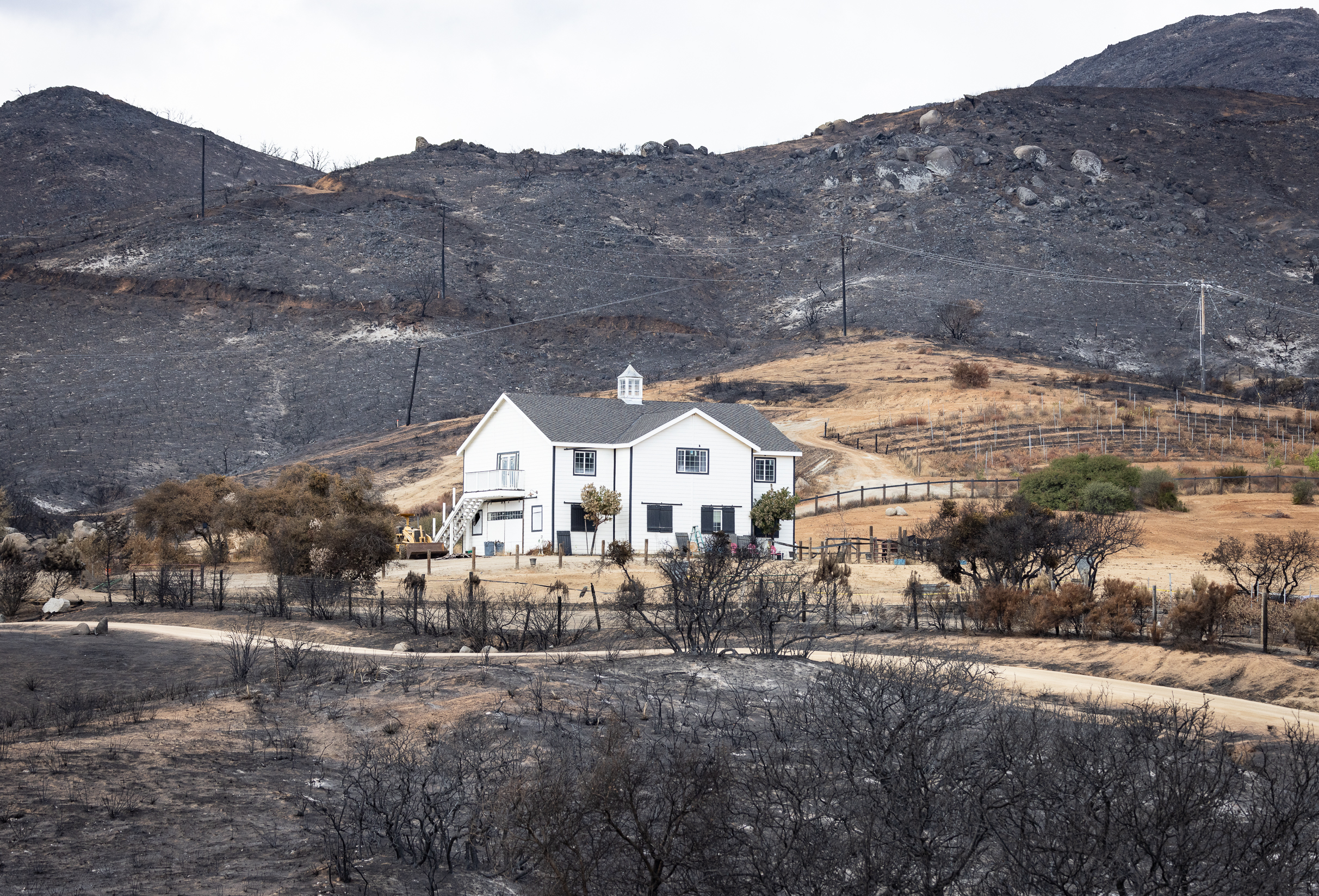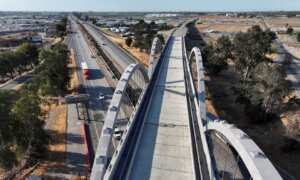Ricardo Lara, California’s insurance commissioner, on Sept. 19 placed a mandatory one-year moratorium on insurance company cancellations and nonrenewals for three-quarters of a million policyholders affected by fires in Southern California.
The insurance commissioner was granted the authority to issue moratoriums by Senate Bill 824, introduced by Lara, then a state senator, and signed into law in 2018, which prohibits insurers from canceling or refusing renewals for residential properties located in wildfire areas if a state of emergency is declared. Policyholders who lose their home to fire are protected for 24 months.
Homeowners in or near the perimeter affected by the Airport, Bridge, and Line fires in Orange, Riverside, Los Angeles, and San Bernardino counties are now temporarily protected after California Gov. Gavin Newsom issued emergency declarations for the areas in recent weeks.
“This creates much-needed breathing room for homeowners,” Lara said in a statement announcing the order. “Wildfire survivors should not have to worry about insurance while they are recovering.”
The Airport fire—which injured 15 people, destroyed 160 structures, and damaged 34 more after burning more than 23,500 acres (36.7 square miles) in Orange and Riverside counties since Sept. 9—is estimated at 62 percent contained as of Sept. 20, according to Cal Fire.
Nearly 55,000 acres (85.6 square miles) have burned in Los Angeles and San Bernardino counties since the Bridge fire started Sept. 8, with 81 structures destroyed, five people injured, and about 4,409 structures threatened, with the blaze 59 percent contained, Cal Fire announced on Sept. 20.
The Line fire has burned more than 39,000 acres (61.3 square miles) in San Bernardino County and is 57 percent contained after erupting on Sept. 5. One structure is reported destroyed and four damaged, according to Cal Fire.
Staff with the insurance department are on the ground in disaster areas helping survivors file claims and working to protect affected communities from insurance abuse and fraud, according to the statement.
The commissioner is asking residents who believe that their insurance company violated the moratorium to contact the department.
Individuals curious about whether their home falls in the emergency declaration zones can visit the insurance agency’s website to determine if their zip code is included in the moratorium.
Homeowners whose policies were not renewed before the emergency was declared or are otherwise unable to secure insurance are asked to contact the insurance department for help in finding coverage.
The insurance commissioner said the moratorium will benefit insurance customers affected by wildfire and help alleviate insurance availability and price challenges.
“This temporary protection also will help calm fears and stabilize the market while the reforms we are making this year are implemented,” Lara said in a statement, referencing the efforts undertaken by the insurance commission, the legislature, and the governor this year to address insurance availability and price issues affecting the Golden State.
Lawmakers are looking to resolve availability and price issues negatively affecting Californians—after dozens of insurance companies announced in the past year that they are leaving the state or reducing offerings.
More than 400,000 properties are covered by the FAIR Plan, an insurer of last resort—backed by a coalition of insurance companies—that offers less coverage for higher priced policies.
Last year, Lara announced a plan to change regulations to allow for catastrophe modeling to determine insurance rates, increase FAIR Plan coverage limits to $20 million per structure, and mandate insurance companies increase the number policies written in “wildfire-stressed” areas by at least 5 percent.
In June, she released another proposal in line with the plan that would require insurance companies to write more policies in “distressed areas” and mandate larger companies to insure such properties at 85 percent of the insurer’s statewide market share.
The governor said the recent proposal is a step in the right direction.
“This is another critical action to help fix California’s decades-old insurance crisis,” Newsom said in a June statement. “It will help homeowners who face higher threats of wildfire get the coverage they need, while also easing pressure off of the state’s FAIR Plan.”
He said the reforms are among the most impactful changes to the state’s regulations in three decades.
Insurance industry representatives and companies—including State Farm after announcing that the company will not renew about 30,000 homes and other residential properties in California—point to high fire risks, inflation, and state laws that prevent rate increases needed to maintain profitability as reasons companies are reducing coverage in California.
“This decision was not made lightly and only after careful analysis of State Farm General’s financial health, which continues to be impacted by inflation, catastrophe exposure, reinsurance costs, and the limitations of working within decades-old insurance regulations,” the company said in a March statement. “State Farm General takes seriously our responsibility to maintain adequate claims-paying capacity for our customers and to comply with applicable financial solvency laws.”














